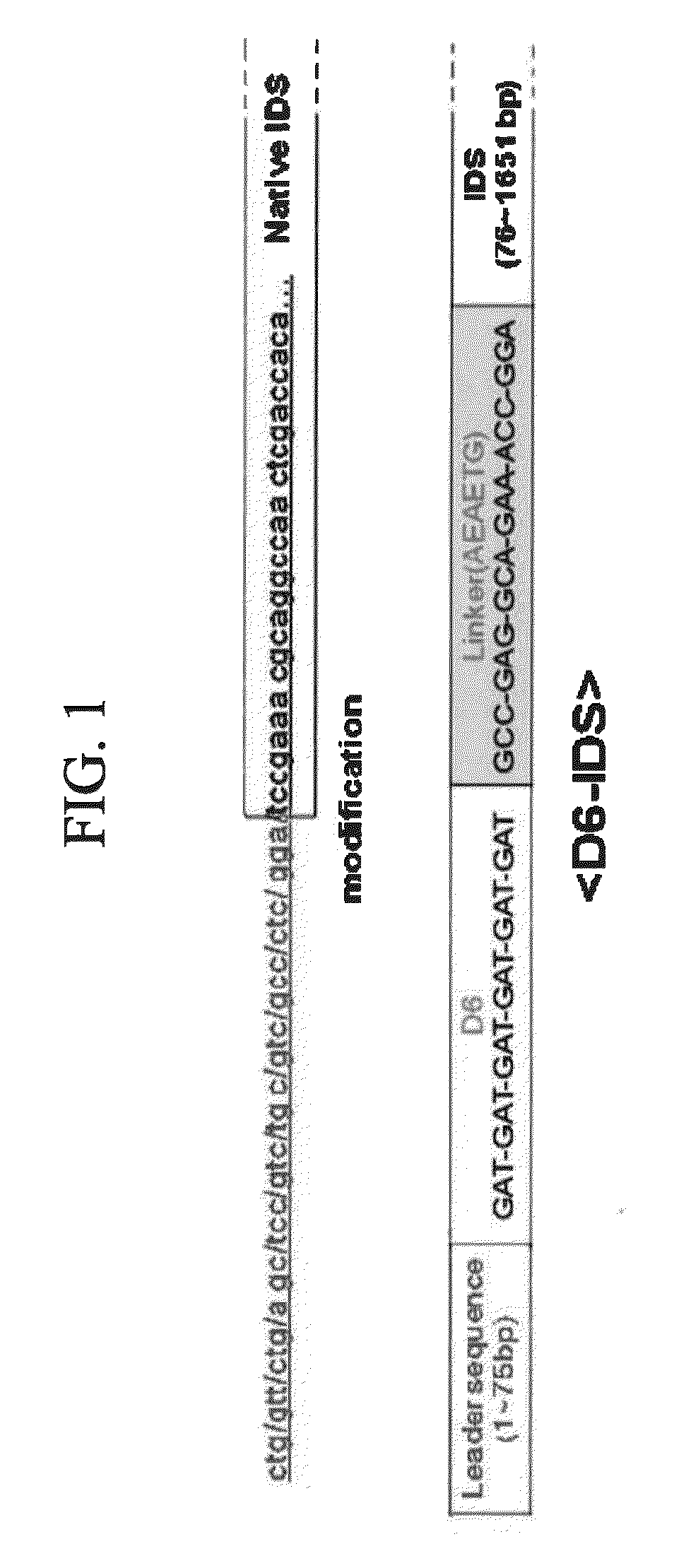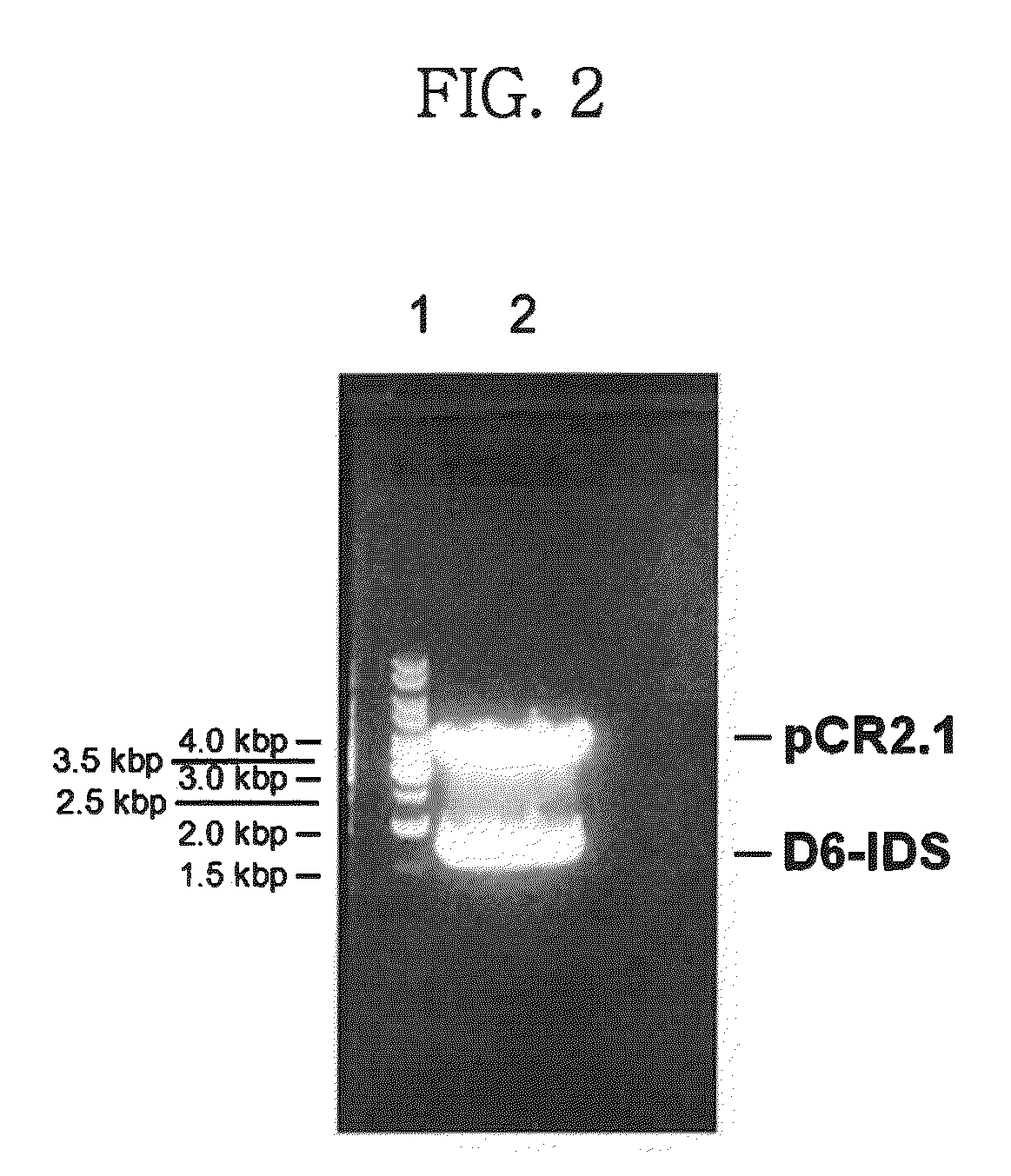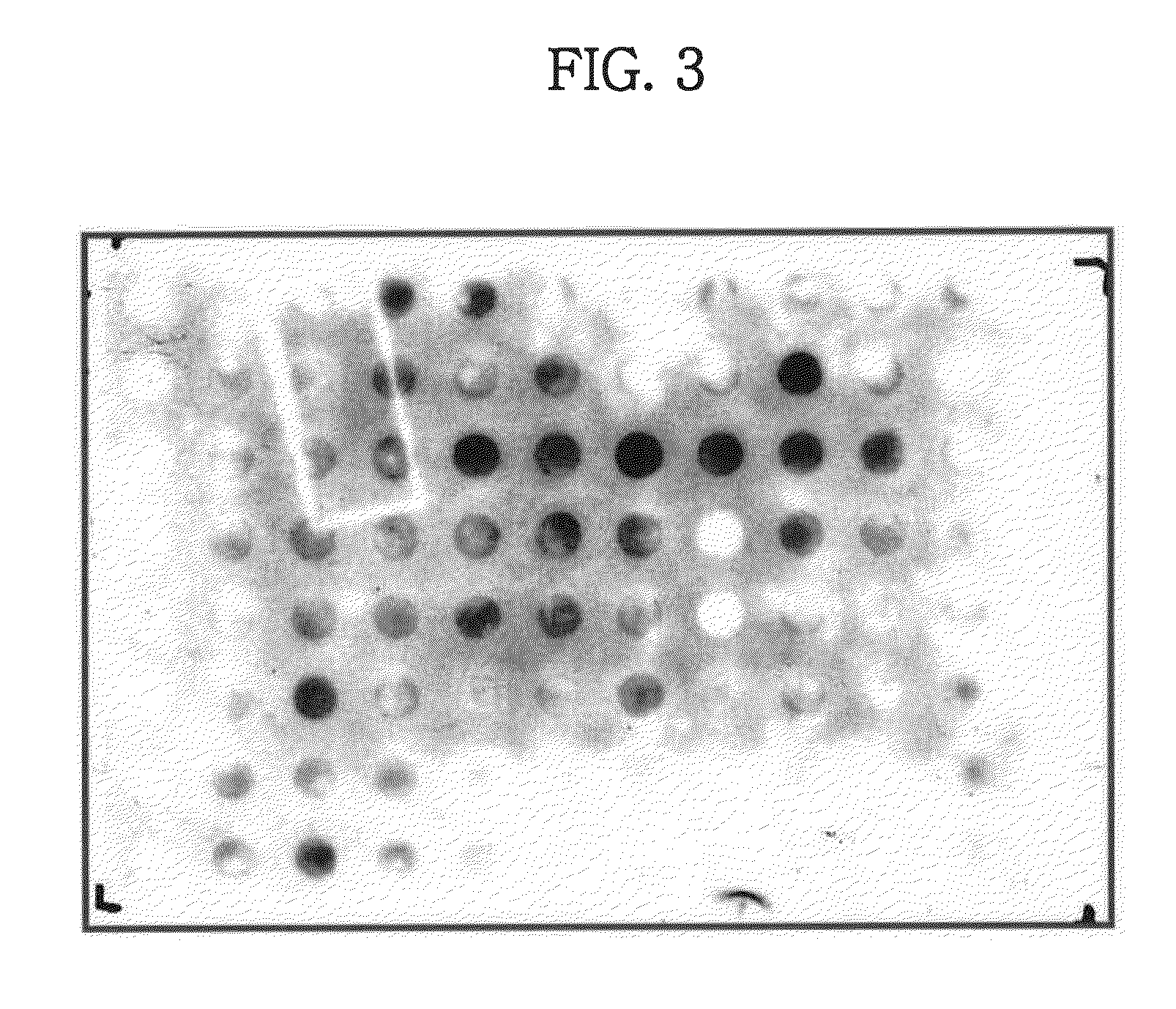Iduronate-2-sulfatase and use thereof
a technology of iduronate and sulfatase, which is applied in the direction of peptides, enzymology, dna/rna fragmentation, etc., can solve the problems of joint stiffness and limited motion, central nervous system involvement, developmental delays and nervous system problems, and create a great burden on patients themselves and on their families
- Summary
- Abstract
- Description
- Claims
- Application Information
AI Technical Summary
Benefits of technology
Problems solved by technology
Method used
Image
Examples
example 1
Preparation of Modified IDS Gene
[0046]In order to solve the problem that the wild-type IDS enzyme has a short half-life in vivo and cannot reach the bone when administered, a genetic modification was made to a wild-type IDS gene. In consideration of the fact that hydroxyapatite, a main ingredient of the bone, is positively charged, an oligonucleotide encoding negatively charged amino acids was inserted into the gene so that the resulting IDS polypeptide was negatively charged. Specifically, a vector (PCR2.1-IDS) carrying a CDS fragment (˜1.7 kb, SEQ ID NO: 1) which was obtained by treating human wild-type IDS cDNA (GenBank accession No. NM—000202) with NheI / XhoI, was provided by Samsung Medical Center. An oligonucleotide consisting of six tandem codons for aspartic acid (GAT) (D6, SEQ ID NO: 2) and a linker sequence (SEQ ID NO: 3) was inserted between the 75th and 76th nucleotides of the CDS fragment. Because D6 and the linker were located between the N-terminal leader sequence and ...
example 2
Expression and Confirmation of Improved IDS Protein
[0047] Construction of Modified IDS Expression Vector
[0048]Digestion with NheI / XhoI excised a modified IDS (D6-IDS) gene from the vector prepared in Example 1 (see FIG. 2). This gene fragment was sub-cloned into a pMGS vector (Korean Patent Application No. 2000-43996; PCT / KR01 / 01285), which was previously treated with the same restriction enzymes, to construct a recombinant IDS expression vector pMSG-D6-IDS. The gene introduced into the vector was analyzed by base sequencing.
[0049] Transfection of Modified IDS Expression Vector
[0050]The pMGS-D6-IDS vector constructed in was linearized with NdeI, and purified with a QIAQuick PCR purification kit. Its DNA concentration was determined before use in transfection. CHO DG44(S)-EX cells (dhfr− / dhfr−, Colombia University) (RMCB #38) were used as host cells. The cells were maintained in a serum-free medium (glutamine-supplemented EX-CELL CD CHO medium, SAFC Bioscience) at 37±1° C. under 5±1...
example 3
Production and Purification of Improved IDS Protein
[0054] Production of Improved IDS
[0055]One of the cryo-preserved cell lines obtained in Example 2 was rapidly thawed and placed in a germ-free centrifugation tube. After centrifugation to remove the supernatant, the resultant cell pellet was suspended in an animal component-free EX-CELL® CD CHO medium supplemented with glutamine (0.8 g / L) in a flask, and cultured at 37±1° C. in a 5±1% CO2 atmosphere. The cells were subcultured every 2-3 days using a shaker flask until the culture volume was extended to 2 L. When the cell number was increased sufficiently to apply to a bioreactor, the cells were inoculated into the bioreactor. During the cultivation of the cells, a sample was taken from the bioreactor, and observed for cell condition under a microscope and analyzed for pH, cell concentration, cell viability, glucose concentration, glutamine concentration, and ammonia concentration. According to this information, glucose and glutamine...
PUM
| Property | Measurement | Unit |
|---|---|---|
| Length | aaaaa | aaaaa |
| Length | aaaaa | aaaaa |
| Mass | aaaaa | aaaaa |
Abstract
Description
Claims
Application Information
 Login to View More
Login to View More - R&D
- Intellectual Property
- Life Sciences
- Materials
- Tech Scout
- Unparalleled Data Quality
- Higher Quality Content
- 60% Fewer Hallucinations
Browse by: Latest US Patents, China's latest patents, Technical Efficacy Thesaurus, Application Domain, Technology Topic, Popular Technical Reports.
© 2025 PatSnap. All rights reserved.Legal|Privacy policy|Modern Slavery Act Transparency Statement|Sitemap|About US| Contact US: help@patsnap.com



